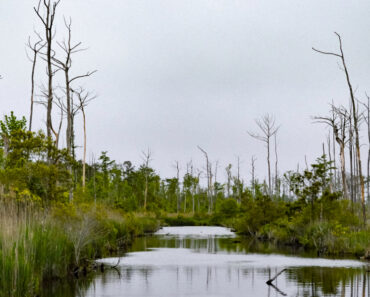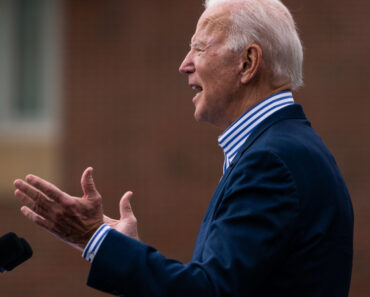This post was originally published on this site
Japanese
cuisine loves to explore texture, embracing the feel of a silky slice of sushi,
the mealiness of a sweet potato, or even the sticky goo of natto (fermented
soybeans). So it should come as no surprise that sake brewers would want to
play with the mouthfeel that bubbles bring.
The earliest bubbly sakes were simple and usually sweet; brewers simply pumped in the needed carbon dioxide, which creates big bubbles and go flat quickly. Those sakes have more in common with Coca Cola than Champagne, but since the turn of the millennium, the latter has become a source of inspiration. Bubbles are a natural by-product of fermentation in both sake and Champagne, so it’s just a matter of capturing them in the bottle instead of letting them disperse into the air.
Fortunately brewers didn’t have to go all the way to France for advice. The Yamanashi Prefecture, approximately an hour drive from Tokyo, is the center of Japan’s wine industry. “We went to wine institute in Yamanashi and researched how sparkling wine is made,” says Tsushima Kitahara at Shichiken, one of sparkling sake’s pioneers. The brewery is within the prefecture as well. “We saw how they produce CO2 with a second fermentation in the bottle,” he explains, and then went to work adapting it to sake brewing. Kitahara says the most difficult aspect was figuring out how to keep the gas pressure, alcohol level, and sweetness stable and balanced.

Sparkling wines have a higher acidity than still wines, which keeps them from tasting heavy. Sake, however, has a much lower acidity than any wine; a pH level of 6.5 is normal compared to 3.5 for a red wine—and even less for Champagne. Often, brewers make their sparkling sakes drier to compensate for the lower acidity. Sakes are also typically more alcoholic, with 15% or 16% alcohol compared to 12.5% for sparkling wines.
Another hurdle is getting the amount of gas pressure correct. Champagne simplifies this process by making a dry sake and then adding more sugar and yeast as the wine goes into the bottle, where the bubbles will be trapped. Adding sugar is not allowed in sake brewing, so brewers have developed a few work-arounds. Masumi began making sparkling sake ten years ago.
“They make two separate batches,” says Chris Pearce, president of World Sake Imports, who sells their sakes. “One is fermented and then pasteurized, the traditional way. The second lot is fermented the same way but not pasteurized; it just goes through a coarse filter. So it still has active yeast and glucose.” The two lots are blended and bottled, with carefully determined proportions so the second lot’s sugars and yeast will yield the right amount of bubbles.

Other brewers make one batch at a time. When it reaches the point at which the right amount of sugars remains, they chill the future sake to stop fermentation, pump it into bottles, and let fermentation recommence. In either case, a step remains to make the Champagne analogy that much more complete: the leftover yeast cells and rice particles need to be removed so the sake can be entirely clear. Fortunately, sparkling sake can be disgorged just as sparkling wine can, by freezing the solids in the neck and then quickly popping them out and resealing the bottle.
The Japanese government has not placed any official definitions on sparkling sake production, but the industry itself has taken efforts to delineate and promote these methods. In 2016, nine breweries came together to form the Japan Awasake Association. (“Awa” means “foam.”) The breweries cooperate in refining the process, maintaining quality standards, and promoting the sakes. “We have several kinds of sparkling sake, which are made from artificial gas or natural gas in the Japanese market,” notes Kitahara, who is one of the founding members. “We should show the customer which method is more valuable, so we needed to establish the Awasake Association to certify Awa sake. Today, 25 sake breweries have joined the association, making 30 different Awa sakes.” Sakes certified by the association are marked by a holographic seal on the neck of the bottle.
There is plenty of
room for variety within the association’s guidelines. Chizuko Niikawa-Helton,
CEO of Sake Discoveries, a sake promotional organization based in New York,
contrasts examples
from two founding members that demonstrate the range of styles. “Hakkaisan’s has a clean, crisp taste,
sharp, and crystal clear,” she says, which is in keeping with Hakkaisan’s house
style more generally. “Nanbu Bijin’s is in a bit more off-dry style, with more
fruity notes and a little bit higher acidity, but still really well-balanced.” Shichiken alone produces four different
examples, varying the character of each with techniques such as barrel-aging or
the addition of aged sake to the blend.

There are brewers using the “awa” method who haven’t joined the association, and some members also play with producing bubbles in other ways. Masumi, for example, makes one of their bubbly sakes by fermenting at very low temperatures; the cold limits how much CO2 can escape into the air. They then filter the sake coarsely as it goes into the bottle. The result is a gently sweet, fruitier, and slightly cloudy sake with just a small amount of effervescence, similar in character to a petillant-naturel wine. It’s a complete contrast to the awa sake, which Pearce describes as “very savory,” with “silky and fine bubbles.” Another brewery he imports, Dewazakura, makes a sparkling sake that splits the difference, more bubbly but also cloudy.
Sake and Champagne are often paired with the same sorts of foods—raw fish, for example—but when bubbles and sake come together, their range expands. “The bubbles have a very similar texture,” Niikawa-Helton says. “So it works great at the start and with appetizers like oysters and light snacks, just like Champagne. But the sake has more umami flavor and lower acidity, so it’s actually easier to pair it with some things than Champagne or wine.”
For Pearce, the occasion for sparkling sake is more straightforward. “There’s always been something kind of sexy about bubbles,” he says. “If you’re at a good Japanese restaurant and you’re celebrating, why not pull out a bottle of sparkling sake?”
More must-read stories from Fortune:
—Inside the newest Star Wars attraction: ‘Rise of the Resistance’
—Why cookbooks are still worth buying
—The 2019 food trends we hope carry over to 2020
—Why the owner of Jameson has been buying U.S. alcohol brands
—Fortune writers and editors recommend their favorite books of 2019
Follow Fortune on Flipboard to stay up-to-date on the latest news and analysis.






